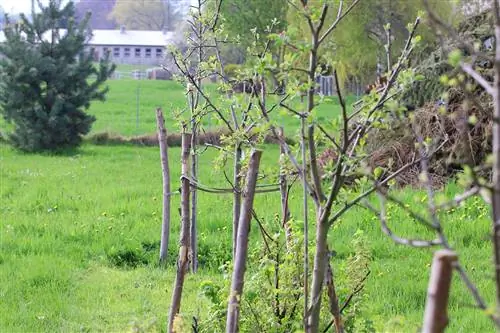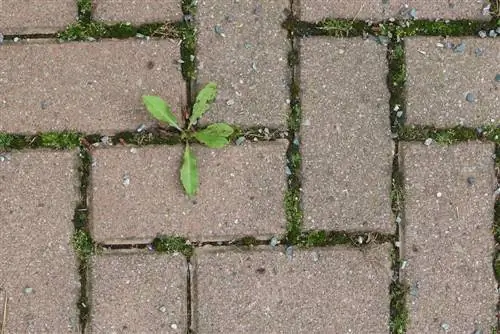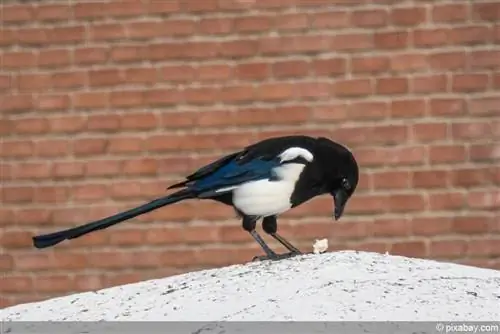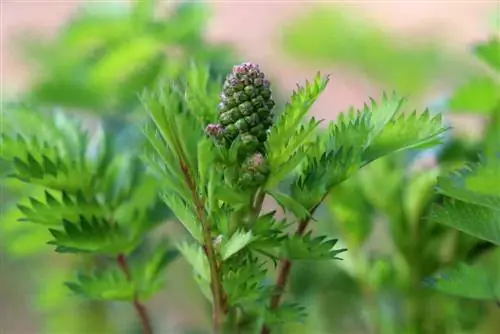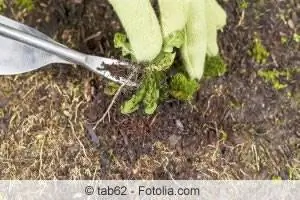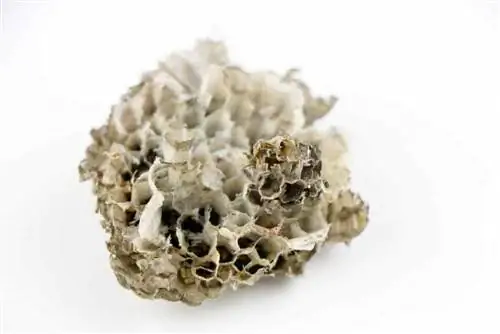- Author admin [email protected].
- Public 2023-12-17 03:39.
- Last modified 2025-01-24 12:45.
The orchard serves as a habitat for plants and animals, has a positive impact on the environment and can even be financially profitable. We show what matters.
Benefits and properties
The orchard is an important habitat. This applies to both animals and plants. On slopes they can prevent soil erosion. In addition, old, regional species are preserved there. Orchards make an important contribution to protecting the environment.
For this reason, some federal states also provide financial support. However, for this to happen, the orchards must have some desired properties that differ significantly from the requirements of an orchard. These include:
- Trees of different ages
- great diversity of species or biodiversity
- high-stem trees with a crown of at least 1.8 m
- no use of artificial fertilizers
- comprehensive herb layer
- No use of chemical-synthetic pesticides
- 60 to a maximum of 120 trees per hectare
Tip:
In an orchard, the trees are significantly higher and further apart than in orchards. Therefore, they can be easily distinguished from each other visually.
Purchase and lease
Orchards are often sold in many places when, for example, care and harvesting can no longer be carried out. Purchasing is therefore comparatively easy depending on the region and the number of meadows. The prices for this range from five to over 20 euros per square meter, also depending on various factors. The decisive factors are:
- existing plants
- State
- Location
- Condition of the meadow and plants

Otherwise, vacant land can also be used to create your own orchards. Another option and an alternative to buying is to lease the land. In both cases, the first point of contact should be the land registry office. Here you can find out who owns the land - if it is not advertised for sale or lease with the owner's contact details.
Tip:
Since the harvest in particular is very time-consuming and labor-intensive, it can make sense to purchase and manage the orchard together with other people. This also makes properties with higher prices per square meter affordable.
Investing
In order to create an orchard, there are only a few points that need to be taken into account. These are:
Planting spacing
The greatest possible distance should be maintained between the trees. For pears and apples, at least twelve meters is ideal. The same applies to walnut trees. For cherries, plums and wild fruit, the distance between the trees can be smaller. However, it is advisable to plant the young trees further apart. This makes it easier to plant younger trees over the years. A distance of at least 20 meters also ensures that the crowns do not close and that wild bees, among other things, can settle better.
Distance to paths and roadways
The distance between trees and any existing paths or roads must generally be at least three meters. However, the regulations for this can vary depending on the federal state and municipality. You should therefore find out the relevant rules before planting.
Number of trees
Orchards should have a total of between 60 and 120 trees per hectare. However, these should not all be planted at once. It is better if the plants are of different ages. An exception is if fruit trees already exist or seedlings of different sizes can be planted.
Species diversity
The first choice for orchards should be regional and older varieties. It is also ideal to combine different types of fruit and nuts. The diversity not only brings variety to the harvest, but also attracts different animals. This increases the value as a living space and different flowering times also improve the attractive appearance.
Plant in stages
So that the trees are of different ages, the planting or creation of the orchards should be spread over several years.
Planting holes
The planting hole should always be twice as large as the respective root ball.
Planning
In neat rows or colorfully distributed? This is purely a question of individual taste. Rows can make harvesting and creating paths easier. However, they quickly appear sterile and therefore do not contribute to a natural landscape design, at least visually.

Tip:
Since a lot of trees have to be planted when creating a new orchard, we recommend renting a mini excavator. With this, the planting holes can be dug much faster and easier, so that the effort can be reduced.
Plants
When planting trees, other points should be taken into account in addition to distance and size. The following instructions show what is important:
- A plan to distribute the trees is being drawn up. Attention should also be paid to the respective requirements of the location and the plants should be positioned accordingly.
- The best planting times are usually in spring and autumn. Spring should be preferred so that the plants can grow before the first frost.
- After digging the planting hole, the soil can be fertilized with compost and, if necessary, added sand to loosen it up.
- The young trees are planted as deep as they were previously in the planter. If grafting has taken place, this point should be above ground.
- After planting the young trees and tamping down the substrate, the plants should be watered well. At least ten liters per tree is recommended.
- If the trees have not yet been pruned, the crown can be corrected immediately after planting.
Tip:
Experience has shown that using a post as a support makes sense for very small, delicate trees. This should be used on the weather and wind side at a distance of around 60 centimeters. This is usually the west side.
Care and harvest
Caring for trees in orchards is not much different from orchards or plants in the garden. Important are:
- a regular, if possible annual blend
- Fertilizing with natural products, such as compost, manure or horn meal
- Irrigation during dry periods
- Checks at regular intervals to detect diseases or parasite infestations at an early stage
- Winter protection in the first year
In contrast to the care, the harvest is more complex compared to a garden or a plantation. It's not just the different ripening times of the fruits that have to be taken into account. Due to the larger distances or irregular distribution of the fruit trees as well as the diversity of species, the harvest phase is very long and getting from one tree to the next is more difficult.
Funding and building regulations
Due to the numerous advantages of orchards, financial support can be applied for in the respective federal state. Various points are important for this.
Including, among others:
- obtain information in advance
- Observe building law
- conduct comprehensive research, for example at a nature conservation association or online
- Care as naturally as possible and without synthetic substances
This makes it possible to receive comprehensive support.

